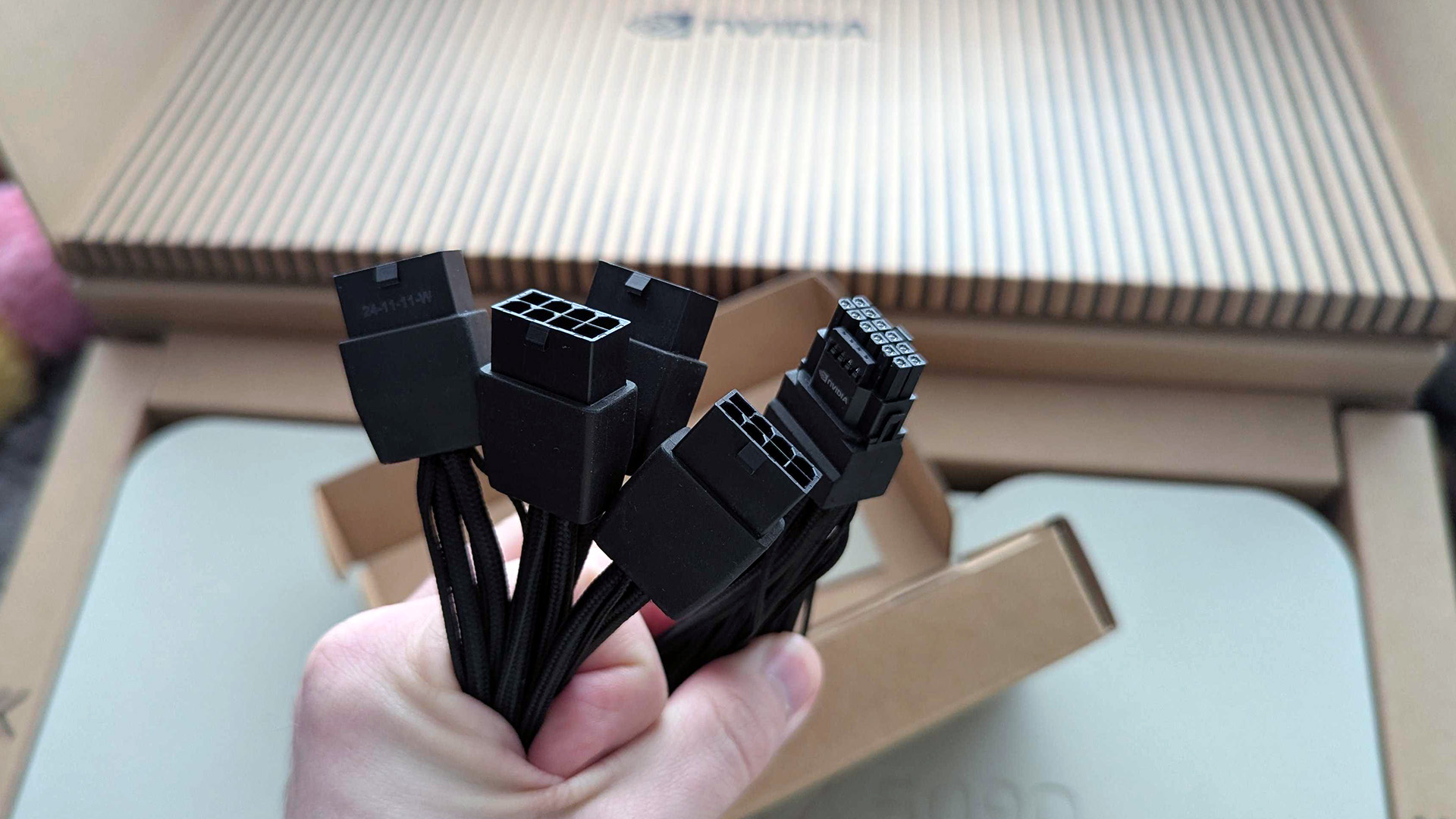
Once more, overheating cables are causing issues with premium NVIDIA graphics cards, specifically the GeForce RTX 5090 Founders Edition. Unhappy buyers and content creators have shared their concerns on social media about excessive heat coming from its 600W connector. A user named “ivan6953” on Reddit detected a burnt smell during gaming and found that one of the pins on their third-party MODDIY 12VHPWR cable had melted significantly. This discovery has sparked a sense of déjà vu in the PC gaming community, causing concern.
RTX 5090FE Molten 12VHPWR from r/nvidia
In late 2022, when RTX 4090 GPUs were first released, they experienced a widespread issue related to the 12VHPWR power connectors, similar to what happened with the last generation. This problem caused elevated temperatures and eventually resulted in cable melting, posing significant fire hazards that unfortunately persisted for several months, affecting some unfortunate users.
Previously, initial problems were attributed to bent cables and insecure connections, as any slight disconnection could lead to issues. To address this, third-party power supply brands for PCs started using 12VHPWR cables with distinct color tips, making it clear to even a beginner builder when the cable was properly connected. Additionally, NVIDIA’s internal redesigns were said to have made their new 12V-2×6 style safer and more reliable.
So, why are we seeing melted cables again?
A YouTuber who specializes in YouTube content creation and has a passion for PCs, known as der8auer, has been delving into the performance of NVIDIA’s latest RTX 5000 GPUs, while also scrutinizing the complications surrounding the 12VHPWR cable linked with the RTX 5090. Initial irregularities were detected upon connecting a Corsair 12VHPWR cable to his RTX 5090 Founders Edition GPU, and these inconsistencies in power distribution across cables were further validated using a thermal imaging camera.
Recently, he shared a video he uploaded a few days prior, where he examines the hardware sent to der8auer for testing, belonging to Reddit user ivan6953. The GPU cable socket on the Reddit user’s graphics card had melted, as well as a couple of power supply sockets. The majority of the damage was sustained by the cable itself, with melted plastic and insulation on both ends. What raised most concern was one of the cables in the bundle taking the bulk of the damage, implying an uneven distribution of power load.
A Reddit user was using a MODDIY third-party cable for their RTX 5090, which many users pointed out as the potential issue. But it’s not that straightforward. Der8auer found out that the 12VHPWR cable lacked enough capacity to handle the RTX 5090’s power consumption, causing the hardware to melt. Der8auer suggests that “the RTX 4080 is well-suited for one of these connectors [12VHPWR]. The 4090 and the 5090 should utilize two connectors instead. That way, there would be enough capacity.”
Reddit users suspected a third-party cable as the problem with an RTX 5090 issue. However, Der8auer discovered that the cable couldn’t handle the card’s power consumption (12VHPWR), leading to hardware failure. To avoid this, Der8auer suggests that cards like the RTX 4090 and RTX 5090 should use two of these cables instead for sufficient power capacity.
Der8auer ultimately came to the conclusion that the melted cable and hardware were not user error after speaking with ivan6953, who turns out to be an enthusiast with PC knowledge who took care to ensure the cable was plugged in fully each time he used it.
In a subsequent video, der8auer reinforces his initial statements using additional test findings. He highlights that he isn’t alone in identifying problems with the 12VHPWR cables, as the issues seem to mirror those encountered with the RTX 4090.
In simpler terms, he’s pointing out that RTX 40 and RTX 50 graphics cards lack the ability to monitor the current flowing through each pin individually, unlike older NVIDIA and contemporary AMD GPUs. Interestingly, he highlights the RTX 3090 Ti’s three-way division of its 12V power, a feature that enables it to distribute power more evenly among connections.
Der8auer’s conclusion – that the root issue seems to be related to NVIDIA’s power distribution setup and the RTX 5090’s inability to adapt to power distribution – sounds reasonable. However, it appears there isn’t a straightforward solution available other than encouraging NVIDIA to modify its design to address this problem.
As a researcher, I regret to inform you that I cannot propose a specific cable that is completely melt-proof at this moment. However, my recommendation would be to invest in top-tier hardware for optimal performance and durability. It’s essential to ensure the hardware is securely connected at all times to minimize any potential issues. While I can’t guarantee it, using high-quality equipment and proper connection techniques should reduce the risk as much as possible. Fingers crossed!
Read More
- PI PREDICTION. PI cryptocurrency
- Gold Rate Forecast
- WCT PREDICTION. WCT cryptocurrency
- LPT PREDICTION. LPT cryptocurrency
- Guide: 18 PS5, PS4 Games You Should Buy in PS Store’s Extended Play Sale
- FANTASY LIFE i: The Girl Who Steals Time digital pre-orders now available for PS5, PS4, Xbox Series, and PC
- Playmates’ Power Rangers Toyline Teaser Reveals First Lineup of Figures
- SOL PREDICTION. SOL cryptocurrency
- Shrek Fans Have Mixed Feelings About New Shrek 5 Character Designs (And There’s A Good Reason)
- Despite Bitcoin’s $64K surprise, some major concerns persist
2025-02-14 21:10